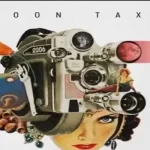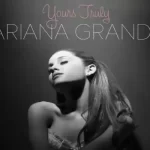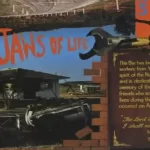✔️ Quick Review
“To Pimp a Butterfly” is a critically acclaimed studio album by Kendrick Lamar. It was released on March 15, 2015. The album showcases a blend of experimental hip-hop, progressive hip-hop, and soul, pushing the boundaries of traditional rap music. With a total of 16 tracks, the album has a runtime of 78 minutes and 51 seconds. “To Pimp a Butterfly” was released under the labels TDE, Aftermath, and Interscope, solidifying Kendrick Lamar’s reputation as a visionary and influential artist in the music industry.
Recording and Production: A Fusion of Musical Styles
The album’s sonic landscape is as diverse as its lyrical themes. To Pimp a Butterfly seamlessly blends hip-hop with elements of jazz, funk, soul, and G-funk, paying homage to the rich history of African-American music. Collaborations with acclaimed producers such as Sounwave, Terrace Martin, Thundercat, and Flying Lotus contribute to the album’s unique sound. The involvement of executive producers Dr. Dre and Anthony “Top Dawg” Tiffith further elevates the project’s artistic vision.
Release and Promotion: The Impactful Arrival
To Pimp a Butterfly hit the music scene with tremendous anticipation and excitement. Kendrick Lamar had already established himself as a formidable force in hip hop with his previous studio album, “good kid, m.A.A.d city.” The album’s release was preceded by the critically acclaimed single “i,” which hinted at a different musical direction for Lamar. Its positive message and infectious grooves provided a stark contrast to the darker tone of his previous work.
Themes and Lyrics: A Deep Exploration of African-American Experience
To Pimp a Butterfly is a socio-political and introspective journey that delves into the African-American experience, addressing issues of racial inequality, cultural identity, mental health, and institutional discrimination. Kendrick Lamar fearlessly examines his personal struggles, depression, and the weight of fame. The album’s profound lyrics and intricate storytelling create a compelling narrative that resonates with listeners on a deep level.
Commercial Performance: Critical Acclaim and Chart Success
To Pimp, a Butterfly received widespread critical acclaim upon its release. It debuted at number one on the US Billboard 200, selling 324,000 copies in its first week. The album’s impact extended beyond commercial success, as it sparked conversations about race, social injustice, and the power of music as a catalyst for change. It earned Kendrick Lamar numerous accolades, including a Grammy Award for Best Rap Album, and solidified his status as one of the most influential artists of his generation.
To pimp a butterfly tracklist
| No. | Song Title | Writer(s) | Producer(s) | Duration |
|---|---|---|---|---|
| 1 | Wesley’s Theory | Kendrick Duckworth, George Clinton, Steven Ellison, Ronald Colson, Stephen Bruner, Boris Gardiner | Flying Lotus, Flippa, Sounwave, Thundercat | 4:47 |
| 2 | For Free? (Interlude) | Kendrick Duckworth, Terrace Martin, Rose McKinney | Martin | 2:10 |
| 3 | King Kunta | Kendrick Duckworth, Mark Spears, Johnny Burns, Michael Jackson, Ahmad Lewis, Stefan Gordy | Sounwave, Martin | 3:54 |
| 4 | Institutionalized | Kendrick Duckworth, Columbus Smith, Fredrik Halldin, Sam Barsh | Rahki, Tommy Black | 4:31 |
| 5 | These Walls | Kendrick Duckworth, Martin, Larrance Dopson, James Fauntleroy, McKinney | Martin, Dopson, Sounwave | 5:00 |
| 6 | U | Kendrick Duckworth, Taz Arnold, Michael Brown | Arnold, Whoarei, Sounwave | 4:28 |
| 7 | Alright | Kendrick Duckworth, Pharrell Williams, Spears | Williams, Sounwave | 3:39 |
| 8 | For Sale? (Interlude) | Kendrick Duckworth, Arnold | Arnold, Sounwave, Martin | 4:51 |
| 9 | Momma | Kendrick Duckworth, Glen Boothe, Arnold, Sylvester Stewart, Lalah Hathaway, Rahsaan Patterson, Rex Rideout | Knxwledge, Arnold | 4:43 |
| 10 | Hood Politics | Kendrick Duckworth, Donte Perkins, Spears, Bruner, Sufjan Stevens | Tae Beast, Sounwave, Thundercat | 4:52 |
| 11 | How Much a Dollar Cost | Kendrick Duckworth, Martin, Josef Leimberg, McKinney, Fauntleroy, Ronald Isley | LoveDragon | 4:21 |
| 12 | Complexion (A Zulu Love) | Kendrick Duckworth, Bruner, Spears, Marlanna Evans | Thundercat, Sounwave, Martin, The Antydote | 4:23 |
| 13 | The Blacker the Berry | Kendrick Duckworth, Matthew Samuels, Stephen Kozmeniuk, Ken Lewis, Brent Kolatalo, Jefferey Campbell, Alexander Izquierdo, Zale Epstein | Boi-1da, KOZ, Martin[a] | 5:28 |
| 14 | You Ain’t Gotta Lie (Momma Said) | Kendrick Duckworth, Martin, McKinney, Leimberg, Spears | LoveDragon | 4:01 |
| 15 | I | Kendrick Duckworth, Smith, Ro. Isley, O’Kelly Isley, Jr., Ernie Isley, Marvin Isley, Rudolph Isley, Christopher Jasper | Rahki | 5:36 |
| 16 | Mortal Man | Kendrick Duckworth, Spears, Bruner, Fela Anikulapo Kuti | Sounwave | 12:07 |
| Total Duration: | 78:51 |

Track-by-Track Analysis
“Wesley’s Theory” (featuring George Clinton and Thundercat)
The album opens with a bang, featuring funk legend George Clinton and bassist Thundercat. The track introduces the listener to the album’s overarching themes of wealth, fame, and the corrupting influence of money.
“For Free? (Interlude)”
This short interlude showcases Kendrick Lamar’s rapid-fire delivery as he addresses the commodification of black bodies and the exploitation of artists in the music industry.
“King Kunta”
One of the album’s standout tracks, “King Kunta” serves as a defiant anthem that asserts Kendrick’s position as a powerful and influential artist. It references the historical figure Kunta Kinte from Alex Haley’s novel “Roots” and highlights the importance of cultural heritage and resilience.
“Institutionalized” (featuring Bilal, Anna Wise, and Snoop Dogg)
This track explores the systemic issues embedded within American society and the struggles faced by individuals attempting to break free from societal constraints. Snoop Dogg’s appearance adds a layer of authenticity, emphasizing the generational impact of institutionalization.
“These Walls” (featuring Bilal, Anna Wise, and Thundercat)
A soulful and introspective song, “These Walls” delves into themes of emotional vulnerability, relationships, and the impact of confinement. The track cleverly uses the metaphor of walls to represent both physical and emotional barriers.
“U”
One of the most emotionally raw and introspective tracks on the album, “U” showcases Kendrick Lamar’s ability to delve into his own personal struggles and confront his demons. The track is a powerful exploration of self-hatred, depression, and the pressures of fame.
“Alright”
An anthem of resilience and hope, “Alright” became a rallying cry during the Black Lives Matter movement. Its infectious chorus and powerful verses address racial injustice while offering a message of perseverance and strength.
“For Sale? (Interlude)”
This interlude explores the concept of selling one’s soul for success, highlighting the moral dilemmas faced by artists in the industry. Kendrick Lamar questions the compromises he has made and reflects on the true cost of fame and fortune.
“Momma”
“Momma” is a contemplative track that pays tribute to Kendrick Lamar’s roots and the lessons he learned from his mother. It reflects on the importance of family, community, and the values instilled in him by his upbringing. The song also touches on the struggles faced by black communities and the need for unity and self-empowerment.
“Hood Politics”
With its gritty production and hard-hitting lyrics, “Hood Politics” delves into the socio-political landscape of marginalized communities. Kendrick Lamar addresses the complex power dynamics within his hometown of Compton and challenges the notion of representation in politics. The track serves as a critique of politicians who exploit the struggles of the urban community for their own gain.
“How Much a Dollar Cost” (featuring James Fauntleroy and Ronald Isley)
This emotionally charged song revolves around a thought-provoking encounter Kendrick Lamar had with a homeless man who asks him for money. It delves into themes of empathy, compassion, and the true value of wealth. Kendrick’s internal struggle with his ego and the spiritual lesson he learns make this track a standout moment on the album.
“Complexion (A Zulu Love)” (featuring Rapsody)
“Complexion” is a celebration of diverse skin tones and a rejection of colorism. Kendrick Lamar emphasizes the beauty and strength in all shades of blackness, promoting unity and self-acceptance. The track features guest artist Rapsody, who delivers a powerful verse, further highlighting the importance of embracing one’s complexion.
“The Blacker the Berry”
“The Blacker the Berry” confronts issues of racial inequality, systemic oppression, and self-reflection. Kendrick Lamar’s impassioned delivery challenges stereotypes and calls for self-accountability within the black community. It serves as a powerful response to the injustices faced by African Americans and encourages unity and self-love in the face of adversity.
“You Ain’t Gotta Lie (Momma Said)”
This track explores the themes of authenticity and honesty. Kendrick Lamar challenges individuals who feel the need to fabricate their lives and present a false image to the world. He emphasizes the importance of staying true to oneself and staying connected to one’s roots.
“i”
A contrast to the previous track, “i” serves as an uplifting and self-affirming anthem. With its infectious groove and positive lyrics, the song encourages self-love, resilience, and the celebration of one’s own identity. It became an anthem of empowerment, particularly for the black community.
“Mortal Man”
The closing track of the album features an interview-style conversation between Kendrick Lamar and the late Tupac Shakur. Kendrick poses introspective questions to Tupac and contemplates his own role as an artist and his responsibility to his community. The track serves as a reflection on the cyclical nature of history and the enduring legacy of black artists.
FAQ:
Q: What is the meaning behind Kendrick Lamar’s album “To Pimp a Butterfly”?
A: “To Pimp, a Butterfly” explores themes of African-American culture, racial inequality, depression, and institutional discrimination. It serves as a commentary on societal issues and personal struggles, offering a deep and introspective exploration of the human experience.
Q: Who produced Kendrick Lamar’s album “To Pimp a Butterfly”?
A: “To Pimp a Butterfly” was produced by a talented group of individuals, including Sounwave, Terrace Martin, Taz “Tisa” Arnold, Thundercat, Rahki, LoveDragon, Flying Lotus, Pharrell Williams, Boi-1da, Knxwledge, and several other renowned hip hop producers. The album’s executive production was handled by Dr. Dre and Anthony “Top Dawg” Tiffith, who played a crucial role in shaping its overall sound and vision.
Q: How did “To Pimp a Butterfly” impact the music industry?
A: “To Pimp a Butterfly” had a profound impact on the music industry, both artistically and culturally. It showcased Kendrick Lamar’s artistic growth and established him as one of the most influential and respected figures in hip hop. The album’s fusion of genres, socially conscious themes, and introspective lyrics set a new standard for artistic expression in the genre and inspired a new wave of socially aware music.
Q: What are some notable tracks from “To Pimp a Butterfly”?
A: Some notable tracks from “To Pimp a Butterfly” include “King Kunta,” “Alright,” “The Blacker the Berry,” “These Walls,” and “How Much a Dollar Cost.” These songs showcase the album’s diverse range of musical styles, powerful lyrics, and thought-provoking themes. Each track contributes to the album’s cohesive narrative and highlights Kendrick Lamar’s exceptional storytelling abilities.
Conclusion
“To Pimp a Butterfly” stands as a testament to Kendrick Lamar’s artistic genius and his ability to create impactful and thought-provoking music. Through its diverse musical styles, profound lyrics, and exploration of African-American culture, the album transcends the boundaries of hip-hop and serves as a platform for discussions on social issues. Its critical acclaim, commercial success, and enduring legacy solidify its place among the greatest albums of its time and make it a true masterpiece in contemporary music.







